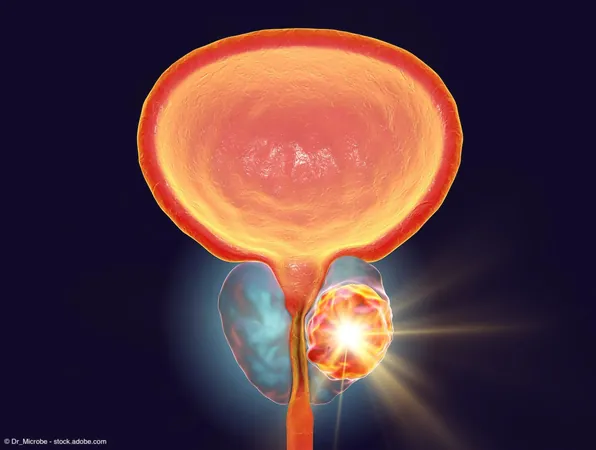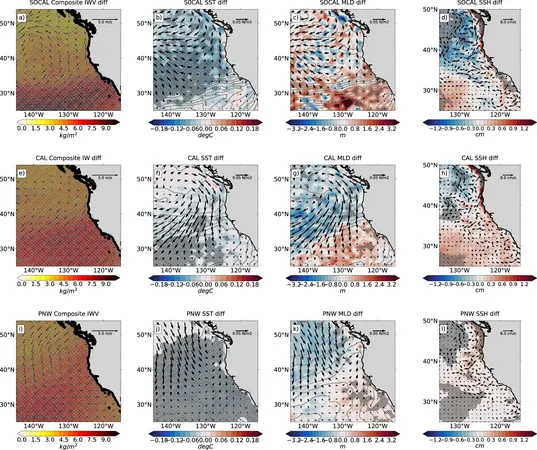
Unlocking the Early Detection of Prostate Cancer Recurrences: How PSMA PET/CT Outshines Traditional Methods
2024-10-29
Author: John Tan
Recent groundbreaking research published in European Urology Oncology reveals that the prostate-specific membrane antigen (PSMA) PET/CT scan is highly effective at identifying recurrences of prostate cancer well before patients show biochemical signs of the disease. This game-changing discovery could revolutionize the management of prostate cancer, particularly for those who have undergone curative treatments.
In a comprehensive retrospective study that evaluated 568 patients, researchers uncovered that a significant 39.1% of participants had not yet reached the Phoenix criteria for biochemical recurrence—defined as a prostate-specific antigen (PSA) rise of at least 2.0 ng/mL above the lowest PSA level. Among these "Phoenix criteria negative" (Ph-) patients, the median PSA rise was only 1.09 ng/mL, compared to 3.63 ng/mL in those who met the criteria (Ph+).
Remarkably, PSMA-avid lesions were detected in 76.6% of the Ph- cohort and a staggering 93.1% of the Ph+ group, demonstrating that many patients could have their cancer identified at a much earlier stage. In fact, about 46.5% of Ph- patients presented with local recurrence only, compared to just 32.3% of Ph+ patients. Furthermore, while 21.8% of Ph- patients had distant metastases, this figure soared to 48.8% for Ph+ patients, emphasizing the capacity of PSMA PET/CT to catch cancer in its early stages.
Adding to the encouraging findings, 75.9% of Ph- patients were considered suitable for potential local salvage therapy, compared to only 45% in the Ph+ group. Overall, an impressive 90% of Ph- patients were eligible for salvage treatment or metastasis-directed therapy (MDT), a stark contrast to the 61.8% eligibility in the Ph+ cohort.
Lead author, Evelien J E van Altena, articulated the significance of these results: “The majority (76%) of patients not yet meeting the Phoenix criteria did indeed have PSMA-avid lesions on PSMA-PET, suggesting recurrence. This early detection allows for more treatment options and can combat the disease at a less advanced stage.”
Moreover, while patients in the Ph- group experienced a longer time before initiating androgen deprivation therapy (ADT) and progression to castration-resistant prostate cancer (CRPC), they also demonstrated a better overall survival rate. The Ph- cohort had a significantly lower 5-year mortality rate of just 5.9% compared to 15.2% for the Ph+ group.
Diagnostic statistical analysis showed that the positive predictive value of PSMA PET/CT was a promising 80.3% for local recurrences and 93.6% for metastatic disease.
However, the authors caution that since the study was retrospective, it may be affected by potential lead time biases. van Altena urged that prospective studies are essential to validate and broaden the implications of these significant findings.
In summary, PSMA PET/CT stands poised to change the landscape of prostate cancer detection and treatment, emphasizing the importance of early intervention. As more research emerges, patients and healthcare providers alike may need to rethink protocols around prostate cancer monitoring and management, possibly leading to improved outcomes for countless individuals battling this disease. Keep your eyes peeled; the future of prostate cancer detection is here!




 Brasil (PT)
Brasil (PT)
 Canada (EN)
Canada (EN)
 Chile (ES)
Chile (ES)
 España (ES)
España (ES)
 France (FR)
France (FR)
 Hong Kong (EN)
Hong Kong (EN)
 Italia (IT)
Italia (IT)
 日本 (JA)
日本 (JA)
 Magyarország (HU)
Magyarország (HU)
 Norge (NO)
Norge (NO)
 Polska (PL)
Polska (PL)
 Schweiz (DE)
Schweiz (DE)
 Singapore (EN)
Singapore (EN)
 Sverige (SV)
Sverige (SV)
 Suomi (FI)
Suomi (FI)
 Türkiye (TR)
Türkiye (TR)